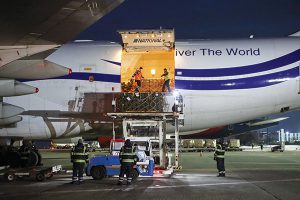Bloomberg
Thousands of additional US and allied soldiers on the ground in Eastern Europe may not alter Russia’s military calculus on Ukraine. But the commitment is a boon to Nato member states near Russia’s border.
From Washington to Paris, governments have vowed to boost readiness and dispatch troops and hardware to deter Russia from attacking Ukraine —and show solidarity with eastern countries in the 30-member military alliance who see an urgent danger in Russia’s aggression. At the same time, they’ve made it clear troops won’t be deployed to Ukraine, which is not a Nato member, if it is invaded.
Even with no direct threat against Nato states, Russia’s military buildup on its territory and in Belarus has increased fears in the alliance’s east given the region’s historical ties with the Soviet Union and the way Russia annexed Crimea from Ukraine in 2014. That has prompted Nato to increase its military presence in the region.
“Clearly 1,000 or 4,000 troops do not stand a chance against 100,000 Russian troops,†said Iulia-Sabina Joja, an adjunct professor of European security at Georgetown University. “But if you have western troops of western citizenship on the ground in the case of an attack, the consequences of attacking a Baltic country would be more ample in the West.â€
Western officials say Russia has massed more than 100,000 troops near the Ukraine border, with the figures rising steadily since November. The UK and US put the current number close to 130,000. Russia continues to deny that it has plans to invade Ukraine.
Nato members already have about 5,000 troops deployed to multinational battle groups in Estonia, Latvia, Lithuania and Poland after allies agreed at its 2016 Warsaw summit to bolster the alliance’s footprint in the region.
Now additional troops have been pledged to potentially reinforce current forces to the east, including from the US, Britain and France. Denmark already dispatched a navy frigate to the Baltic Sea and is deploying four F-16 fighter jets to Lithuania to back the alliance’s air-policing in the region.
The US is looking at “possible additional moves†in central and eastern Europe, given that a lot of Nato members there “feel concerned,†Julianne Smith, the US Ambassador to the alliance, told Bloomberg Television. “We are looking at what measures we might take in the name of reassurance and deterrence.â€
The added ships and planes in the Baltic and the Black Seas aim “partly to conduct surveillance, to monitor, to have the best possible picture of the developments in and around Ukraine, but also to provide reassurance to allies,†Nato Secretary General Jens Stoltenberg said last week.
That seems to be working for former Soviet-dominated nations that are now Nato members. A case in point is Estonia where fears over Russia’s military activities have prompted leaders to call for action and sanctions to prevent a full-scale conflict.
 The Gulf Time Newspaper One of the finest business newspapers in the UAE brought to you by our professional writers and editors.
The Gulf Time Newspaper One of the finest business newspapers in the UAE brought to you by our professional writers and editors.
